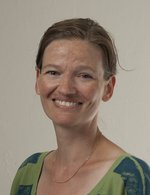| 09:00-09:05 | Opening remarks by the chair | |
09:05-09:15
| Welcome by the Head of Department Erik Østergaard Jensen | |
| 09:15-10:00 | Scientific session 1 (short presentations by PhD students/postdocs) Astrid Bøgh Jensen: Functional Analysis of Human Antithrombin Variants in Mice Jing Wang: Retrovirus Detection by Rolling Circle Amplification of an Integrase Product Maria D. Aamann: Extreme aging – caused by lack of functional Cockayne Syndrome group B protein | |
| 10:00-10:30 | Coffee break | |
10:30-11:15 | Scientific session 2 (short presentations by PhD students/postdocs) Dugald Reid: Identification of cytokinin biosynthesis genes required for maintaining cytokinin homeostasis during nodule development in Lotus japonicus Mikkel Søes Ibsen: The crystal structure of the antiviral OASL Cody Geary: A Single-Stranded Architecture for Cotranscriptional Folding of RNA Nanostructures | |
| 11:15-11:30 | Group photo | |
| 11:30-13:30 | Lunch, exhibitions, and poster session | |
| 13:30-14:15 | Rikke Schmidt Kjærgaard: Art in science: How it works | |
| 14:15-14:45 | Coffee break | |
| 14:45-15:00 | Teaching prize ceremony | |
| 15:00-15:15 | Exhibitors' prizes | |
| 15:15-16:00 | Keynote lecture - Professor and FRS Frances Ashcroft, University of Oxford, UK: The Spark of Life: the story of ion channels | |
| 18:30-02:00 | Dinner and party at the canteen of "Samfundsvidenskaberne" (Social Sciences), Building 1320. |
Professor and FRS Frances Ashcroft
University of Oxford, UK
Abstract
What do a herd of ‘fainting’ goats, a shivering pig, a child with cystic fibrosis, a person who feels no pain, a migraine sufferer and someone with a rare inherited form of diabetes have in common? The answer is that all of them have genetic errors in a particular kind of protein, known as an ion channel, that regulates the electrical activity of the body. Humans are electrical machines and your ability to read this page and to understand its message, to laugh and cry, to see and hear, and to move your limbs, is due to the electrical events taking place in the nerve cells in your brain and the muscle cells in your limbs. And that electrical activity is initiated and regulated by your ion channels. These little-known proteins are essential for every aspect of our lives, from consciousness to fighting infection, from sexual attraction to the beating of our hearts. They are also used as weapons of warfare by the immune system and by bacteria. It is therefore not surprising that a multitude of medicinal drugs work by regulating the activity of ion channels, and that impaired ion channel function is responsible for many human and animal diseases. This lecture charts the development of our understanding of animal electricity, and explains how electrical impulses are generated by ion channels. It discusses the ways that ion channels regulate our lives and the dramatic consequences when things go wrong. It also shows how an understanding of the ion channels involved can lead to a new therapy for patients born with a rare form of diabetes. In brief, its aim is to 'sing the body electric'.
Biography
Professor Frances Ashcroft FRS was educated at Cambridge University. She is currently Professor of Physiology at the University of Oxford, a Fellow of Trinity College, Oxford, and Director of OXION, a training and research programme on the integrative physiology of ion channels. Her research aims to elucidate how a rise in the blood glucose concentration stimulates the release of insulin from the pancreatic beta-cells. She has shown that an ion channel known as the ATP-sensitive potassium (KATP) channel plays a vitally important role in regulating insulin secretion and, more recently, her work with Andrew Hattersley has revealed that mutations in KATP channel genes can cause neonatal diabetes, a rare genetic form of diabetes that develops soon after birth. Understanding how the KATP channel functions has enabled most patients with neonatal diabetes to substitute oral drug therapy for insulin injections.
Download the abstract (PDF-file)

Rikke Schmidt Kjærgaard
Aarhus Institute of Advanced Studies, Aarhus University
iNANO-MBG
Art, and even simple drawing, is necessary in explaining the theories of science, to record observations and ideas, and to convey their meaning visually (Wong & Kjærgaard 2010, Nature Methods). Graphics are an essential component of all scientific articles, regardless of the scientific topic. A diagram, an info-graphic or a conceptual illustration enhances the scientific content, and is often as important as the text itself in conveying the scientific theories and data.
When we pick up an article, we look at the pictures or diagrams before we start reading the text. According to Nik Spencer at Nature, art helps to illustrate concepts and subjects in ways not possible with text. It forms the essential iconography that we associate with all of science and also gives us a way to visualize scientific abstraction in new and exciting ways (Spencer 2014, Nature/Biozoom).
In this talk I will look at specific examples of visual representations, the ideas behind them and the artistic processes involved.